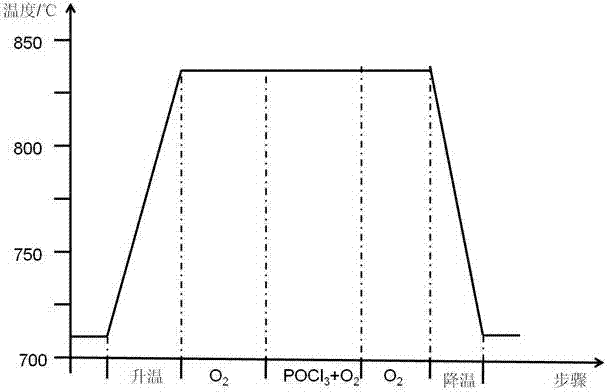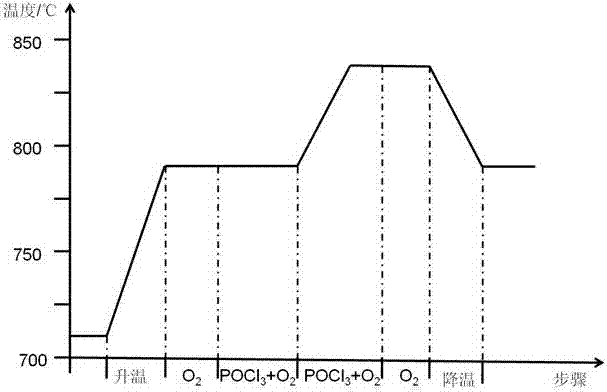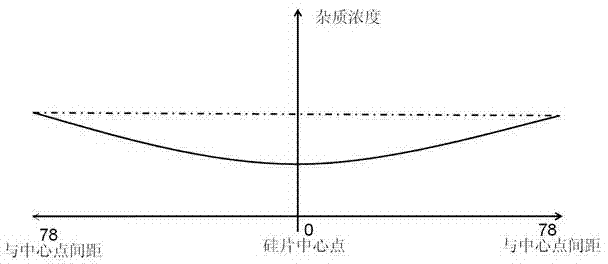Spread method of polycrystalline silicon solar cell
A technology of a solar cell and a diffusion method, which is applied in the field of solar cell manufacturing, can solve the problems of low impurity concentration at the center point of a silicon wafer, low photoelectric conversion efficiency of a cell, poor diffusion uniformity, etc., and achieves improved photoelectric conversion efficiency and uniform impurity concentration distribution. , the effect of uniform distribution
- Summary
- Abstract
- Description
- Claims
- Application Information
AI Technical Summary
Problems solved by technology
Method used
Image
Examples
Embodiment Construction
[0055] See figure 2 , The invention relates to a polycrystalline silicon solar cell diffusion method, and the process steps of the diffusion method are as follows:
[0056] Step one, enter the boat
[0057] The silicon wafers after texturing enter the diffusion furnace with an initial temperature of 500~770℃, and the time of entering the boat is 700~900s. During the process of feeding the silicon wafers into the boat, large nitrogen is introduced into the gas inlet pipe of the diffusion furnace, and the flow of large nitrogen is 23500 ~24500sccm.
[0058] Step two, heating up
[0059] The diffusion furnace is heated to 770~790°C, the heating time is 700~900s, and the large nitrogen is introduced during the heating process, and the large nitrogen flow rate is 23500~24500sccm.
[0060] Step three, oxidation
[0061] Keep the temperature of the diffusion furnace at 770~790℃, and pass large nitrogen and oxygen into the diffusion furnace. The flow rate of large nitrogen is 23500~24500sccm, ...
PUM
 Login to View More
Login to View More Abstract
Description
Claims
Application Information
 Login to View More
Login to View More - R&D
- Intellectual Property
- Life Sciences
- Materials
- Tech Scout
- Unparalleled Data Quality
- Higher Quality Content
- 60% Fewer Hallucinations
Browse by: Latest US Patents, China's latest patents, Technical Efficacy Thesaurus, Application Domain, Technology Topic, Popular Technical Reports.
© 2025 PatSnap. All rights reserved.Legal|Privacy policy|Modern Slavery Act Transparency Statement|Sitemap|About US| Contact US: help@patsnap.com



